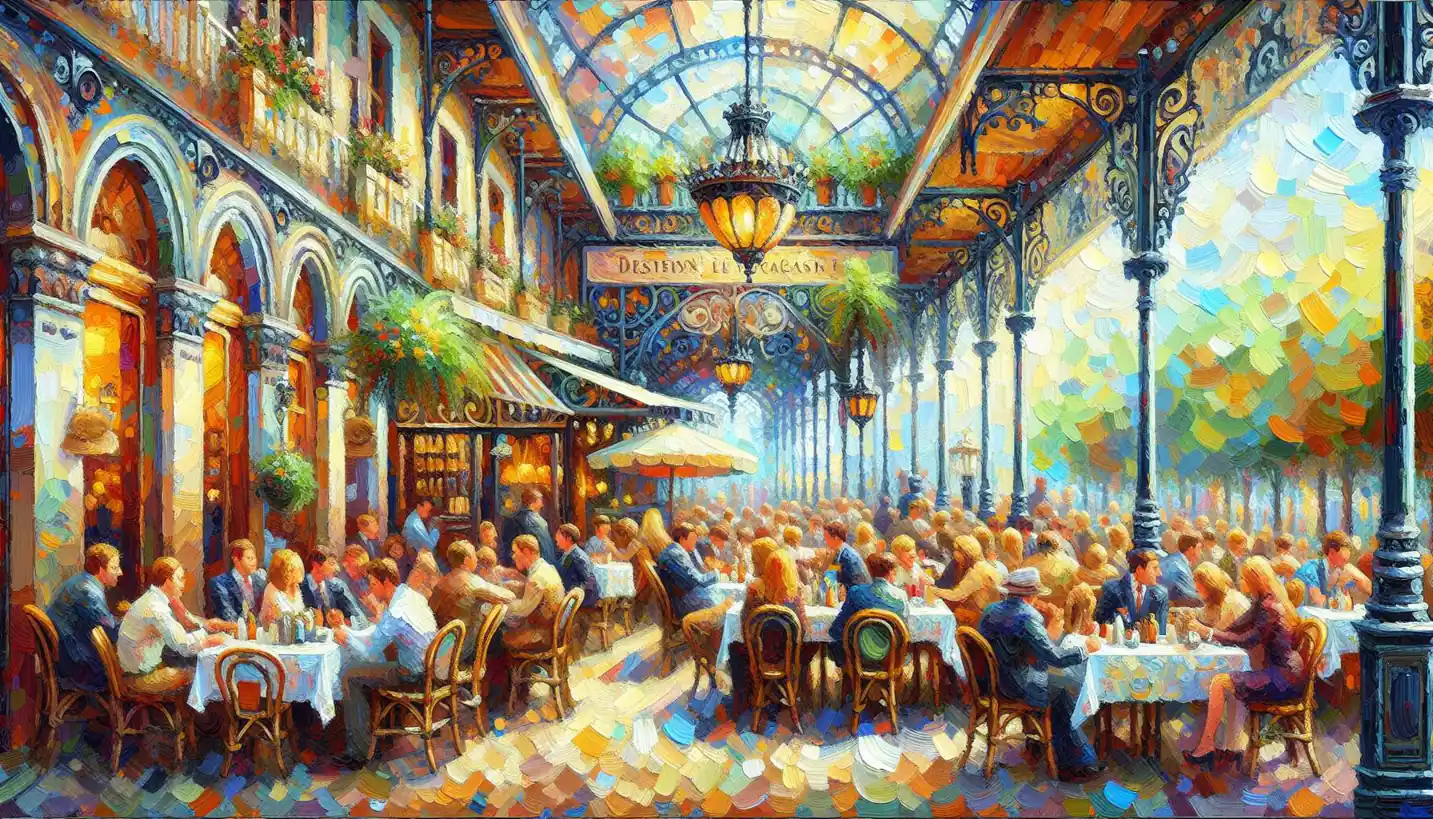· Art · 4 min read
Sound Diffusion: Crafting the Symphony of Space
Sound diffusion crafts a symphony within spaces, making walls sing and floors resonate. Experience the fascinating way sound art harmonizes with architectural environments.

When exploring how sound interacts with its environment, sound diffusion becomes a fascinating concept. Imagine being in a room where music washes over you from all directions, creating an immersive experience. This is what sound diffusion in sound art seeks to achieve: spreading sound evenly across a space to craft an auditory journey like no other.
Sound diffusion, in simple terms, is about how sound spreads out, bouncing off walls, ceilings, and floors to touch every corner of an environment. It’s not just about hearing sound; it’s about feeling it as it wraps around you. Think of it like light casting shadows in a dim room, creating a play of depth and dimension. Just as light diffusion changes the way we see, sound diffusion changes the way we hear.
The Art of Creating Space with Sound
Sound artists use diffusion to build a sense of presence and ambiance. By carefully positioning speakers and choosing how sound waves interact with a room’s surfaces, they can make a space come alive. It’s like painting with sound, where every note and tone is a brushstroke that adds depth and complexity to the auditory landscape.
Picture an art gallery where each exhibit has its own musical score. With sound diffusion, the music can be tailored so that as you move from one piece of art to another, the soundscape shifts seamlessly. This creates an evolving tapestry of sound that not only complements the visual art but also elevates your overall sensory experience.
The Science Behind the Art
Now, let’s dive into the mechanics of sound diffusion. Sound waves travel through the air, but how they interact with different surfaces affects how we hear them. Smooth surfaces reflect sound waves, while rough surfaces scatter them. This scattering is what creates the diffuse sound field, where sound appears to be coming from all directions.
To achieve effective diffusion, artists and engineers use tools like diffusers. These are objects or materials designed to scatter sound waves evenly across a space. They can be as simple as an uneven wooden panel or as complex as a mathematically designed structure like a quadratic diffuser. The goal is to ensure that sound doesn’t just bounce back in one direction but spreads out to fill the room.
Creating a Personal Symphony
Imagine a performance where the sound surrounds you, changing as you move. Sound artists experiment with different speaker arrangements and technologies to craft these immersive experiences. They often use an array of speakers positioned strategically around a venue. The placement can transform any space into a concert hall or a vast acoustic landscape.
Let’s imagine walking through an art installation, and as you step closer to one artwork, you hear subtle whispers of sound, while another emits a bold symphony as you draw near. This choreography of sound isn’t left to chance; it’s intentionally crafted through the principles of sound diffusion, allowing artists to guide you through a personal auditory journey.
Why Sound Diffusion Matters
Sound diffusion isn’t just for artistic expression; it has practical applications too. In spaces like theaters, concert halls, and even offices, achieving the right balance of sound is crucial. Good diffusion ensures clarity, reducing echoes and dead spots—areas where the sound feels flat or nonexistent. This means whether you’re enjoying a symphony or trying to focus in an open office, sound diffusion can enhance your experience.
The Future of Sound Diffusion
As technology evolves, so does the potential for sound diffusion. With advancements in spatial audio and virtual reality, sound artists can manipulate and place sound with even greater precision. Imagine experiencing a virtual concert where it feels like the band is performing right in your living room, with sound enveloping you from every angle.
Researchers are also exploring how sound diffusion can impact mental health and well-being. Spaces designed with thoughtful soundscapes can have calming effects, reduce stress, and even improve concentration. The possibilities are endless, and we’re just scratching the surface of what sound diffusion can achieve.
Conclusion: The Symphony Continues
Sound diffusion is a bridge between art and science, merging creativity with physics to shape our auditory world. Whether it’s enhancing the appreciation of visual art or improving everyday environments, it’s a testament to how sound, when skillfully diffused, can transform spaces and experiences. So next time you find yourself enveloped in a wave of beautiful sound, remember—it’s not just what you hear, but how it’s being diffused that makes the magic happen.


